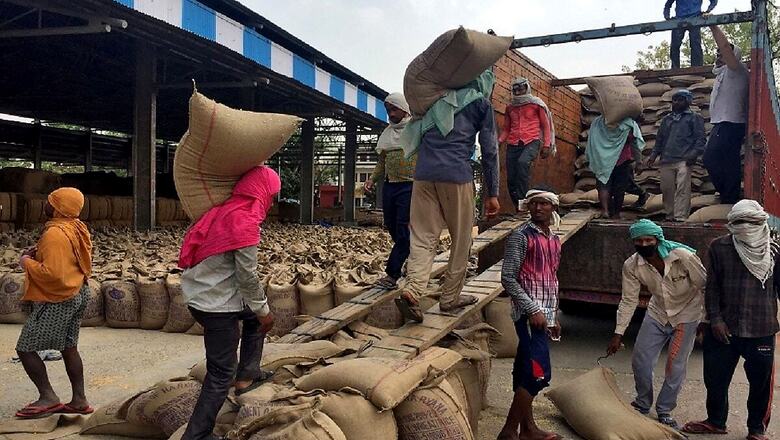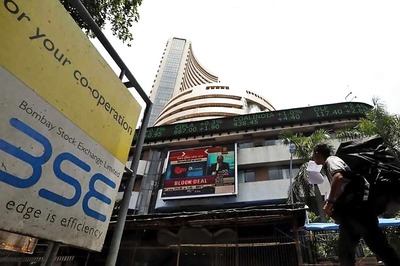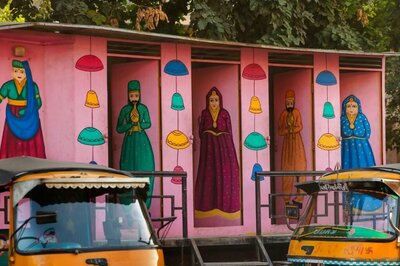
views
Amid the rapid spread of COVID-19, Haryana has been at the forefront of fighting this challenge. Simultaneously, the procurement of wheat is on in full swing in mandis and all COVID protocols are being followed. Haryana has always taken the lead in pioneering models of governance and implementing them. Chief Minister Manohar Lal Khattar has always stressed that every policy’s full benefit must reach the targeted beneficiary.
Under his leadership, the state government has documented and digitized the records of all farmer families through the revolutionary Parivar Pehchan Patra, which ensures that the payment for crop procurement directly reaches Haryana’s farmers. Doubling farmers’ income is the stated goal of our Prime Minister Narendra Modi; our pioneering system of direct farmer payments is trying to realise his vision at the ground level.
Making the direct benefit transfer (DBT) possible is Haryana’s successful digitization of agricultural land records and linking those with the digital identity and bank accounts of individual farmers. The digitized agricultural land record also provides details of the crop planted in each season. Now, every farmer registers on Meri Fasal Mera Byora to sell their produce in the mandis; all these details are automatically linked and cross-verified through a seamless process.
This has helped cut down not just the waiting time for selling the produce but more importantly expedited the schedule for making payments to farmers in under-72 hours, after they are issued the ‘I-form’. This is a significant improvement compared to when the farmer would get the payment from arhatiyas after weeks. More importantly, earlier, the relationship between the farmer (seller) and the government (buyer) could not be formally established. But now, it formally exists on a digital channel.
If there is any delay in the payment to the farmers, the state government is paying an interest at the rate of 9 per cent. There are about 11,000 farmers whose payments have been delayed by one day (after issuing the ‘I-form’); therefore, the state government has issued Rs 20 lakh as interest to these farmers. It is not just the farmers who benefit from the direct payment; even the arhatiyas’ commission is being transferred directly into their account without delay. This is expected to improve the cash flow of the arhatiyas and they do not have to worry endlessly about their commission.
Haryana was expecting around 80 lakh metric tonnes of wheat this Rabi season; 79 lakh metric tonnes have already arrived in the mandis, of which 74 lakh metric tonnes have been procured as of April 26, and Rs 6,800 crore has been disbursed—the money directly reaching the farmers’ accounts. Such a quick reimbursement has never happened before. This has convinced Haryana’s farmers about our government’s commitment towards their overall welfare. This time, the wheat procurement can surpass all expectations and the state may cross 90 lakh metric tonnes by May 15. Last year, 74 lakh metric tonnes of wheat were procured by the government agencies during the Rabi season, and in 2019, it stood at 87 lakh metric tonnes.
Besides digitization and registration of farmers, the responsibility of procuring this season’s Rabi crop has been given to the deputy commissioner in each district. As a result, the whole process is being conducted in a far more efficient manner than ever before. I have been visiting a couple of mandis every day since the Rabi procurement season started on April 1. I am confident this season will record the fastest crop procurement-to-payment in the history of India.
Due to the delegation of procurement to the deputy commissioners, the glitches in scheduling and logistics—entry, weighing, bagging and lifting of the grain and sending it to the godown—have been ironed out. The farmer no longer has to wait for weeks at the mandis to get their crop weighed and bagged. Now, the mandis are not crowded or overwhelmed. The crop is being quickly lifted and transported as soon as it is bagged. This is a massive operation involving thousands of trucks and several thousands of people, with deputy commissioners overseeing the entire operation, across Haryana.
These improvements will drastically increase farmers’ incomes in the future. The digitization of procurement payments will give us the data to understand the problems related to farmers’ land holding, land productivity and actual incomes, at a granular level. The problem is not the same everywhere; in agriculture, one-size-fits-all model does not work. Our system will allow us to customize proposed solutions to fit the unique needs of every individual farmer.
An important component of the Meri Fasal Mera Byora portal is the data on the productivity of each farmer’s land. This is the most crucial part of the problem. Until now, our agricultural scientists were suggesting generic solutions, such as “add more manure” or “do drip irrigation.” The productivity data for each crop can be analysed and specific customised solutions can be provided to each kisan. This will help us reach our goal of doubling farmers’ income in a few years.
Read all the Latest News, Breaking News and Coronavirus News here. Follow us on Facebook, Twitter and Telegram.




















Comments
0 comment